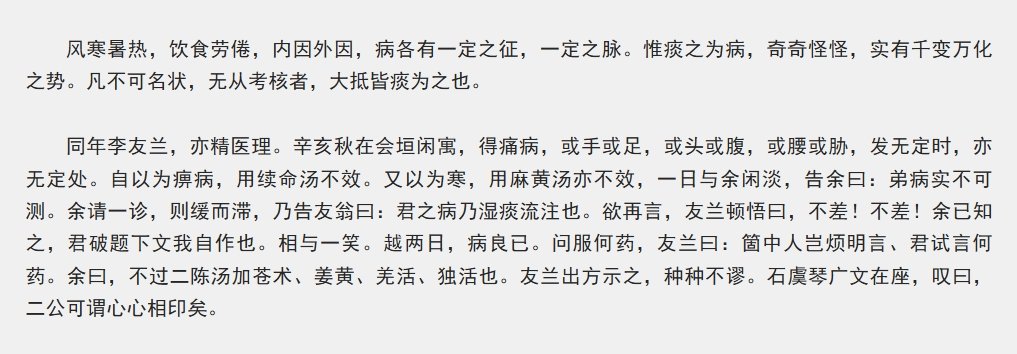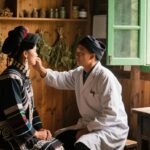Common illnesses caused by external factors like wind, cold, summer heat, or internal factors like improper diet and exhaustion typically show specific symptoms and pulse patterns. However, diseases caused by phlegm-dampness (abnormal fluid accumulation) manifest in bizarre, ever-changing ways. When symptoms defy description or conventional diagnosis, phlegm-dampness is often the culprit.

My colleague Li Youlan, a skilled physician, encountered such a case during autumn of the Xinhai year (1911) while staying in a provincial capital. He developed migratory pain that unpredictably affected his hands, feet, head, abdomen, waist, or ribs. Initially diagnosing it as bi syndrome (joint obstruction), he took Xuming Tang (a classical formula for wind-dampness) without improvement. Suspecting cold invasion later, he tried Mahuang Tang (Ephedra Decoction) but still found no relief.
During a conversation about his perplexing condition, I checked his pulse and observed it was slow and sticky – a hallmark of phlegm-dampness. Before I could elaborate, he suddenly exclaimed: “Of course! Now I understand! You’ve identified the root cause – I’ll handle the (used in traditional contexts) plan myself!” We shared a knowing smile. Two days later, his pain vanished completely. When asked about his remedy, he teased: “Between physicians, explanations are unnecessary.
Guess the formula!” I replied: “You likely used Erchen Tang (Two-Cured Decoction – a foundational phlegm-resolving formula) combined with Atractylodes Rhizome (Cangzhu), Turmeric (Jianghuang), Notopterygium Rhizome (Qianghuo), and Angelica Pubescens Root (Duhuo) to expel dampness and activate circulation.” He confirmed my guess by showing his prescription. Witnessing this exchange, Shi Yuqin (an educational official in ancient China) remarked: “You two share a telepathic understanding of medicine!”



Leave a Reply